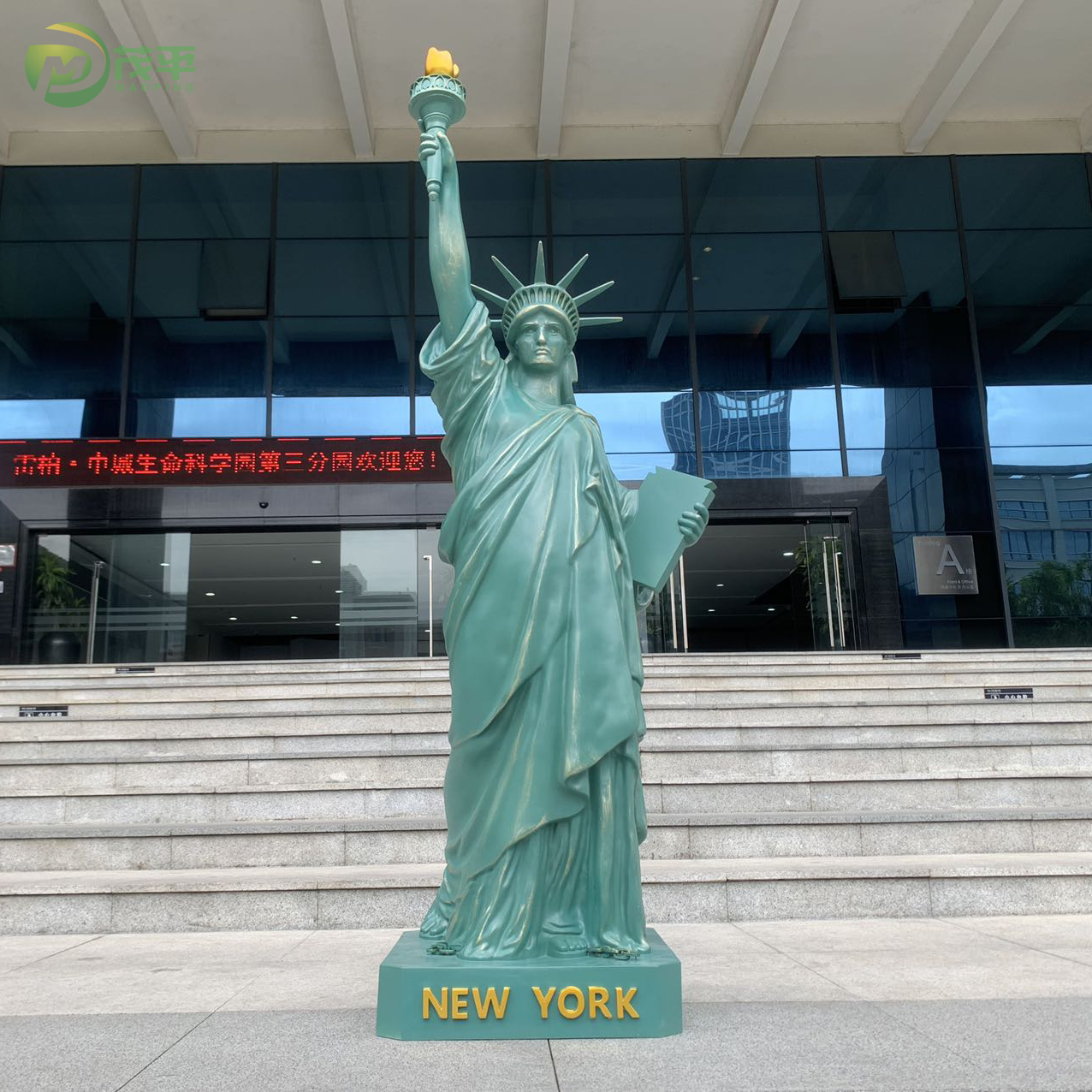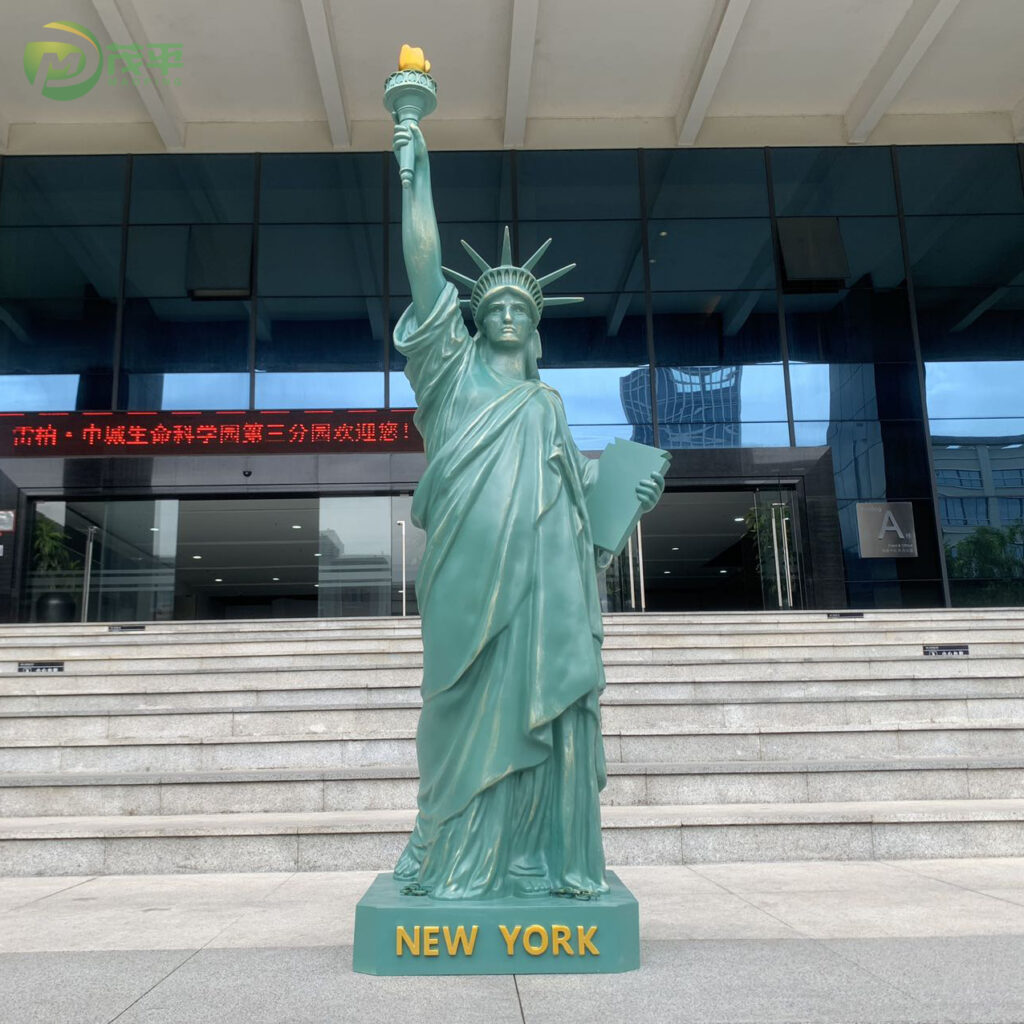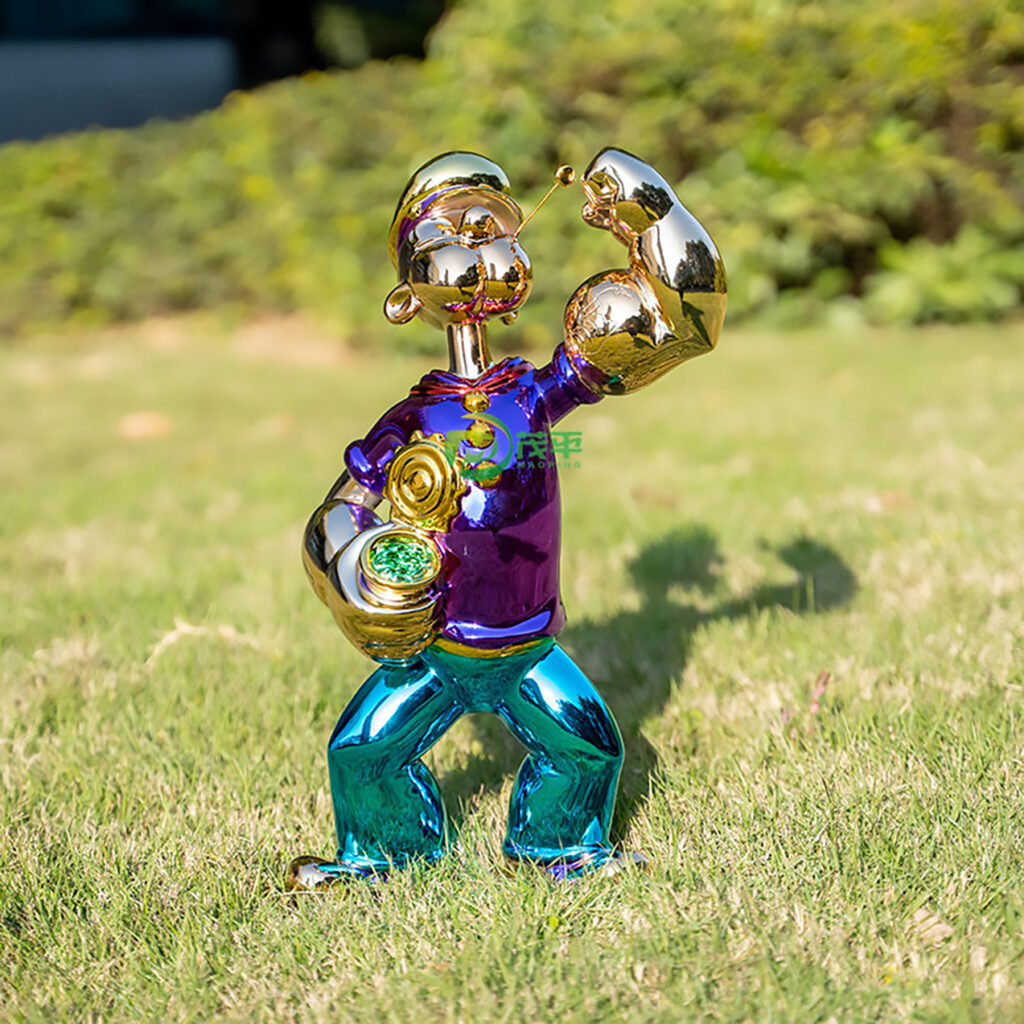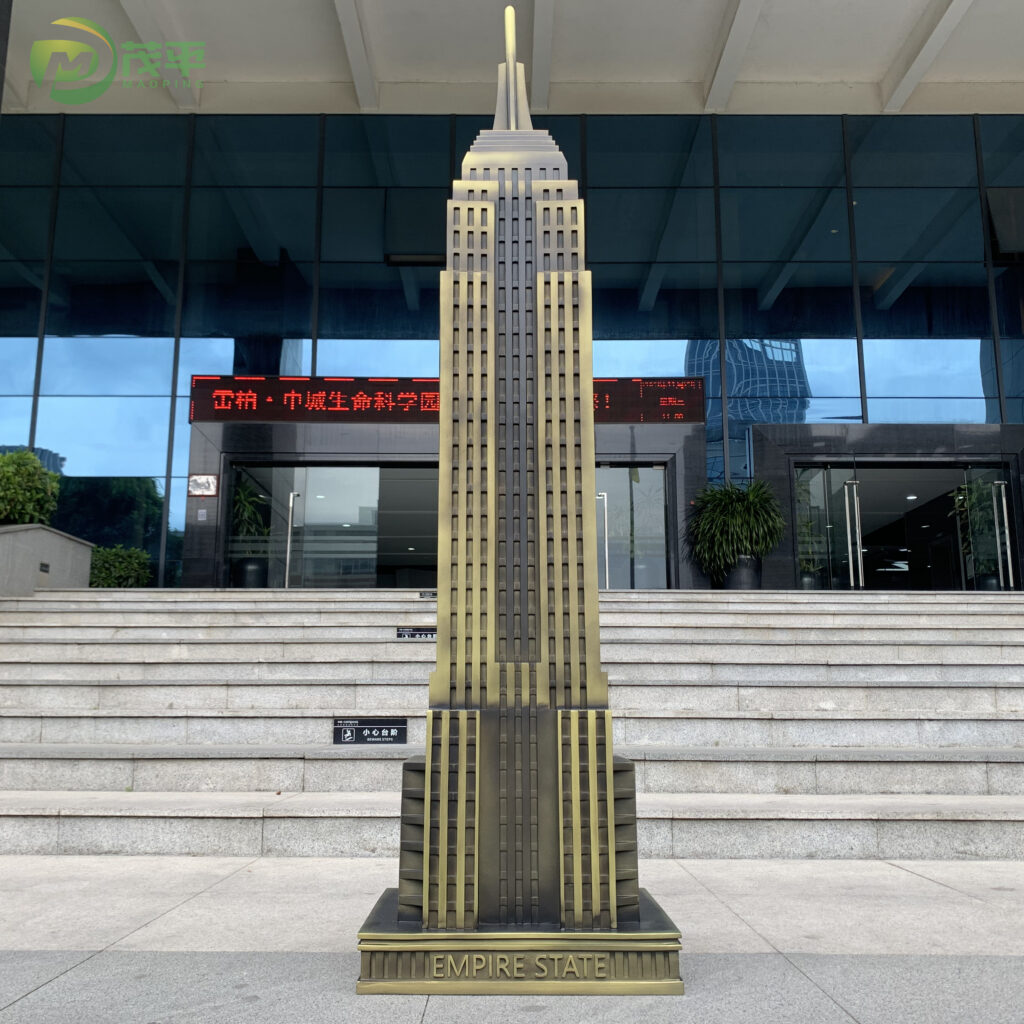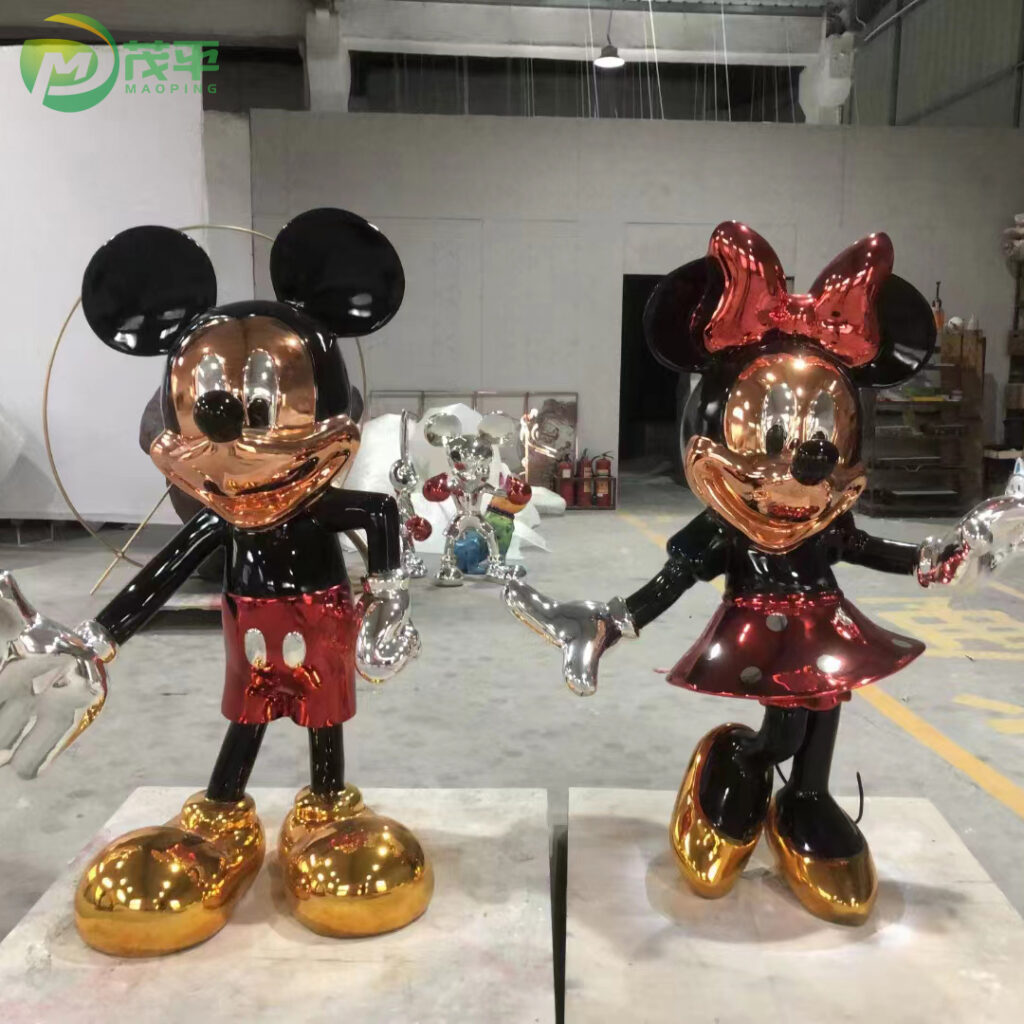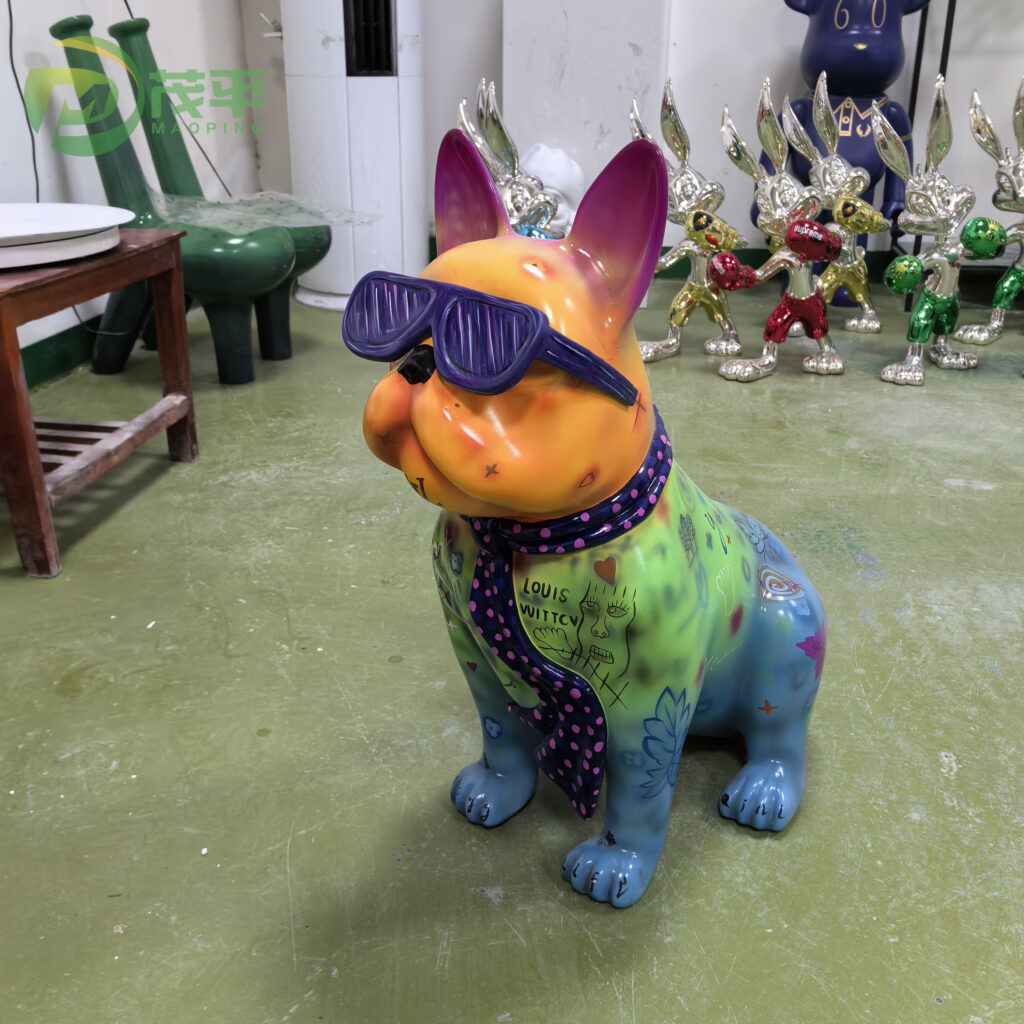Fiberglass has been quickly used in sculpture creation due to its advantages of being lightweight, low-cost, easy to shape, customizable, and can be freely adjusted in color. And the sculptures made of fiberglass have bright colors, smooth lines, beautiful appearance and easy installation. It can be made into a variety of surface effects such as imitation gold, imitation copper, and imitation stone, thus expressing a distinct sense of modernity and the times.
Fiberglass sculptures are becoming more and more popular among merchants and sellers, occupying an increasingly large market share, and have broad prospects! It is widely used in decorative construction, home furniture, craft gifts, building materials and sanitary ware, sports materials, sanitation projects and other industries, and is highly praised.
However, after being exposed to the sun and wind erosion outdoors, fiberglass sculptures generally begin to deform and become fragile and easily cracked after five years or more. So we can choose the materials for making sculptures according to our own needs.
This article organizes and displays the production process of fiberglass sculptures. The pictures in the article also show the popular fiberglass sculptures of Maoping Sculpture.
1.Clay sculpture making
According to the design drawing and the characteristics of the finished product, the supporting frame and shape are prepared in advance. Then fill in the mud. Depending on the style of sculpture, different methods can be used. Such as foam shearing, scraper and other methods. The final carving and refinement can only proceed to the next step after the customer’s approval.
2. Reproduce the mold
First, technicians will decide how to treat the surface of the clay sculpture based on various factors. According to customer requirements, molds of different materials are reproduced. Such as silicone mold, plaster mold, or fiberglass mold. Several molds each have their own advantages and disadvantages. For example, the cost of silicone mold is extremely high, but the finished product produced by it has the best effect. Fiberglass molds can also be used multiple times, and the finished product has good effects, but it has the disadvantage of variability. The plaster mold is disposable and low cost. When making molds, technicians need to divide the mold into two or more pieces according to the shape of the product. But its purpose is not to damage the mold, facilitate installation and easy splicing.
3. Make the finished product
Fiberglass sculptures are manufactured using hand lay-up molding methods. Several unit molds are copied separately. Splicing, also known as assembly. Based on this, unit products are formed and then combined into a whole. Seam processing: after splicing several unit products, the gaps need to be bonded and polished. Bracket making. That is, the skeleton that supports the stability of the finished product is generally made of steel.
4.Post-processing
The surface is scraped with resin putty and polished. Effect processing. Through painting, spraying, distressing, gilding and other techniques, you can achieve imitation gold, silver, copper, imitation bronze, imitation jade, imitation stone, and other effects.

